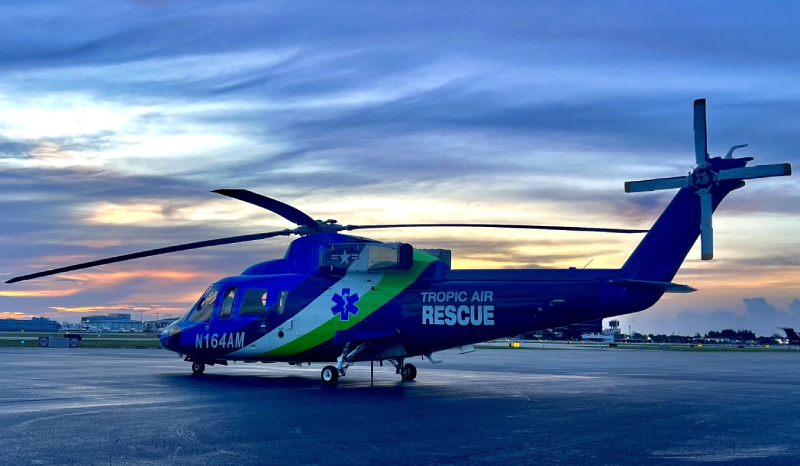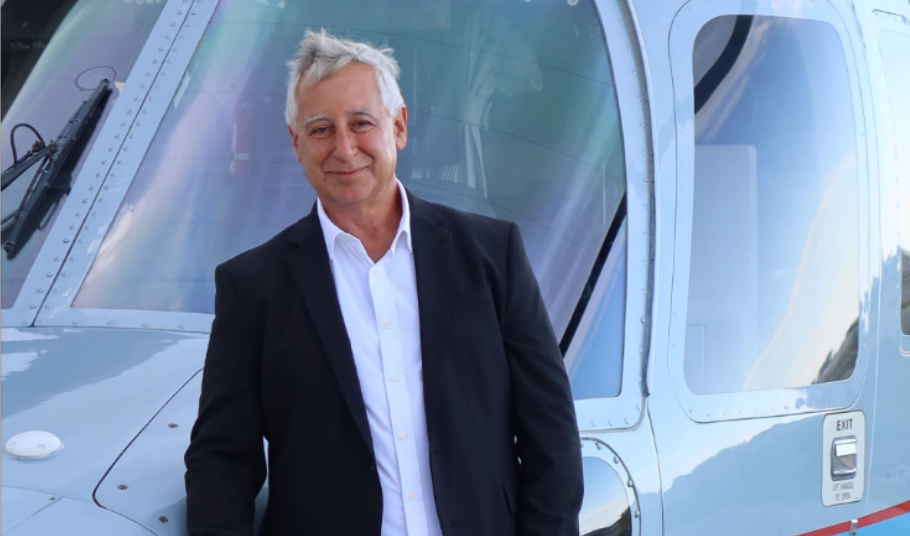FOR MOST people, retirement means slowing down. For Anthony Marinello, it meant flying straight into the biggest professional challenge of his life and building a company that is rewriting the playbook for emergency medical response in The Bahamas and South Florida.
A 28-year veteran of the New Jersey State Police and 21-year helicopter pilot, Marinello was no stranger to high-pressure rescues. He had logged thousands of hours in the air, served as chief pilot for the Newark Police Department, and even held titles as township councilman, deputy mayor, and mayor in his New Jersey hometown. But by 2021, he started looking for a venture of his own.
That search led him to a small aviation company flying passengers and cargo between Fort Lauderdale and The Bahamas. The business was steady, but an incident with a passenger in distress changed everything.
“One of my pilots called and said he had a passenger who he thought was having a stroke. He was afraid to put him on the airplane and did not know what to do,” Marinello tells SBFW. “So, I started calling every air ambulance company I could find. Most said they were too busy, or it would take days to get there. That is when I realized there was no helicopter air ambulance service in The Bahamas. It had never been done.”
Two years, countless approvals, and a fleet overhaul later, Tropic Air Rescue was born.
Headquartered at Fort Lauderdale Executive Airport, the company operates with FAA helicopter air ambulance certification and specializes in rapid-response medical evacuation across Florida and The Bahamas. The service is membership-based, covering individuals, families, and marine vessels, and is built to deploy within minutes, not days.
The difference is speed.
Fixed-wing air ambulances, the traditional standard, often require patients to be brought to airports and can take eight to 36 hours to arrive. Tropic Air Rescue’s Sikorsky S-76 helicopters launch directly to the scene, staffed with certified trauma paramedics, nurses, and pilots.
“We are on standby 24/7 with crews ready to go,” Marinello says. “We can have a patient back in the U.S. within a couple of hours.”
Since launching, the company has completed roughly 50 rescues in its first year, and some have been extraordinary. The first call came from a U.S. congressman seeking help for 10 people trapped during the civil war in Port-au-Prince, Haiti. Marinello and his team flew a complex multi-stop route from Fort Lauderdale to Haiti, evacuated the group, and brought them to safety in the Dominican Republic. The mission made global headlines and earned him the 2024 Sikorsky Rescue Award. Weeks later, Florida officials asked him to assist in evacuating 700 Americans from Haiti. His crews personally moved 143 of them.
Reaching Every Island
The company’s reach covers more than 700 Bahamian islands, most without hospitals. “There are only three hospitals in the entire Bahamas, two on one island and one on another,” Marinello says. “On the rest, you might have a nurse or a first-aid station. If you are seriously injured, you need to be evacuated. We are the only ones who can do it immediately.”
Memberships start at $1,000 a year for individuals, with marine coverage priced per foot of vessel. The model allows the company to operate without government subsidies and ensures members pay nothing at the time of rescue.

The calls they get are rarely routine. Shark bites, boating accidents, golf cart crashes, and medical emergencies aboard yachts and cruise ships are all in a day’s work. Some rescues end with grateful phone calls and heartfelt letters from families. “I have had parents call and say, ‘We never felt so helpless. Thank God you were there,’” Marinello says. “Those moments stick with you.”
Beyond The Bahamas
Marinello’s ambitions extend beyond The Bahamas. Once the company’s footprint is firmly established, he plans to expand down the Caribbean chain, creating a network of helicopters and airplanes to offer seamless medical evacuation from island to hospital.
It is a capital- and logistics-intensive vision, but Marinello’s track record suggests he is comfortable navigating complex missions. “When you are injured and far from care, this is the most efficient way to get back to the United States,” he says.
For now, his team of 48—including pilots, paramedics, nurses, and doctors—remains focused on readiness. The helicopter parked outside Jet Runway Café at Fort Lauderdale Executive Airport serves as a constant reminder of the mission. It also serves as a billboard for a simple message: in the right hands, minutes can mean survival. And Marinello has spent a career making every second count.
